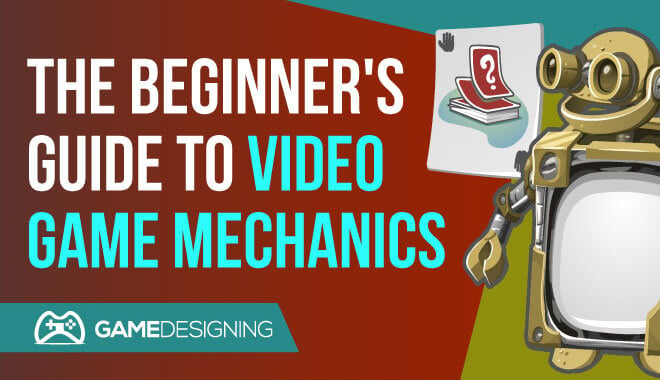 We are reader-supported. Purchases made through links on our site may earn us a commission. Learn More.
We are reader-supported. Purchases made through links on our site may earn us a commission. Learn More.
To understand what a game mechanic is, first it’s important to be familiar with another term important to video games: gameplay.
While it can vary depending on who you ask, the gameplay is essentially how the player interacts with the game.
When you think about a game’s rules, plot, objectives, challenges, and how the player is meant to interact with them, you’re thinking about the gameplay.
Game mechanics help provide gameplay by providing a construct of methods or rules designed for the player to interact with.
Although various theories are out there concerning game mechanics, they are present in pretty much every video game.
A game designer’s main role is to come up with game mechanics that are engaging enough to either entertain a player or give them an impacting and worthwhile experience.
Gaming Mechanics Terms You Should Know
If you want to know the more detailed mechanics of a game, you need to know the gamer terminology. Let’s look at some of the most prevalent examples that you simply need to know if you want to immerse yourself in gamer culture, (and who doesn’t?). Here’s our video game terminology list.
The ESRB Rating Guide
ESRB stands for the Entertainment Software Rating Board, the panel of people who determine what rating a game receives. They are the people that look at gameplay, character actions, blood, profanity, and a countless amount of other game content to determine if a game is rated
- EC for early childhood
- E for everyone
- E10+ for Everyone 10+
- T for teen
- M for mature
- AO for adults only
- RP for Rating Pending: a game in which has not yet been rated by the ESRB
The ESRB examines if there is the presence of alcohol, blood, sexual content, violence, strong language, and more. They sprang up in 1994 after the release of the infamous Mortal Kombat and all of the violence it brought. Because of this, the ESRB has become a source of contention between the ESRB and gamers, game makers, and anti-censorship advocates.
Game Genres
Like films and literature, games themselves contain a multitude of different genres. Here are some of the most prevalent and some examples to illustrate them.
RPG: Role-playing games
- These are games in which the player takes on the role of a certain character in a detailed and well-thought-out world. Some of the biggest and most significant examples of this are franchises like The Elder Scrolls series, Fallout, and The Witcher.
FPS: First-person shooters
- These action titles usually revolve around some major conflict, whether it be historical fiction like those in the Call of Duty franchise, or something out of this world like Halo and its sequels. You take on the guise of a character in the first-person perspective, often having to combat waves of enemies to complete your goal.
Platformers
- These titles deal with jumping from platform to platform, having the player avoid obstacles. There’s no better example of the best game mechanics platformers offer than in the Mario games. You guide Mario through colorful levels, avoiding enemies, and jumping over different obstacles.
Puzzle Games
- These games emphasize solving puzzles or riddles to complete them. These could be games like Sudoku or Tetris or blend themselves into action games like L.A. Noire, in which the player needs to solve police cases in an open-world environment.
Simulation
- Simulation games mimic realistic actions like piloting a plane, racing a car, or even playing sports. These games rely mostly on a sense of realism and aim to immerse the player in whatever they’re playing. Examples are Microsoft Flight Simulator, Gran Turismo, and Fight Night.
Party Games
- These games, like Mario Party, have multiple players face off against one another. They are designed for people to literally play at parties in multiplayer form.
In-Game Terms
Campaign
- This refers to the main story of the game being played. Sometimes campaigns are solo as well as co-op, allowing for multiple players to work together through the game’s main missions.
Checkpoint
- Some games have a checkpoint system, in which if a player dies or stops playing, they are instantly transferred back to the checkpoint. This acts as a safe point for the player.
Co-Op
- Co-Op, or cooperative gameplay, is when multiple players can join together in playing a game. This could be in a story-based game, or in an action-oriented game like Left 4 Dead and Payday.
Cutscene
- A cutscene is a cinematic event in which part of the story of the game unfolds. As game technology advances, these have become more advanced and impressive. If you have ever played Metal Gear Solid or The Last of Us, you’ll be familiar with some quality cutscenes.
Difficulty
- The setting at which the player chooses how easy or hard a game will be.
Game Over
- Usually when the player runs out of lives, runs out of time, or generally doesn’t meet the winning conditions, they experience a game over. This essentially stops gameplay and has the player restart from an earlier save or checkpoint.
Hit Points
- Hit points are what represents a player’s life bar, or how much damage they can take before getting a game over.
Mana/Magic
- Along with hit points, this represents how much magical power a character has. These are usually found in RPGs.
Map/Level
- This is the game’s location in the game’s world in which the player is situated.
NPC
- A non-player character. These are the characters that populate whichever game world the player is in. They can give quests, give the world a sense of reality, and cannot be controlled by the player.
What are video game characters called? Players themselves are called the PC, or player character. This goes hand in hand with NPCs.
Sidequest
- A quest that isn’t related to the main quest or campaign of the game. These are usually quests in which the player receives bonus rewards or skills for completing them. They also pad game playing time.
XP
- Experience points. This represents how far your character is to leveling up or advancing to earn new abilities, weapons, and more.
Related: How to Use Skill Trees In Game Design
Chat Terms
AFK: Away from Keyboard
- This term is usually sent when a player needs to leave their computer for a short or long period, notifying fellow players they’re unavailable.
GG: Good Game
- GG is usually sent after a heated match of multiplayer gaming. This is some good sportsmanship!
QQ: ‘Crying eyes’
- This term, opposite of GG, is typed when a player is seen as whining or as being a sore loser. The two Q’s represent crying eyes.
Tryhard
- This term is applied to someone who is trying too hard or taking a game way too seriously.
Miscellaneous Terms
Camping
- Camping is when a player sits in one spot, usually at a place where they can kill another player easily. This is considered taboo and terrible sportsmanship. Spawn camping is when a player hangs out and waits for players to spawn to get an easy kill.
Kick
- Players can be ‘kicked’ out of certain multiplayer games for acting unsportsmanlike, causing trouble, or being a nuisance.
Ragequit or RQ
- When a player literally quits due to being angry due to game events. This is usually in multiplayer games after the player experiences continual loss, unfair game mechanics, or other grievances. This is usually considered poor sportsmanship.
Noob
- Short for a newbie, or someone who is completely new to the game, often displaying it by lack of skill or unfamiliarity with the game’s mechanics. Noob is used often as a derogatory term.
Game Mechanics vs Gameplay
What is the difference between gameplay and game mechanics?
Game mechanics are the aspects of the game design, or rules, in which the player follows within the game world. These dictate how the player acts within the game. For example, a game mechanic of having missions and objectives for that mission forces the player to adhere to those game mechanics.
Gameplay, on the other hand, is what actually takes place when a player plays the game. Missions are the game mechanics; completing and engaging with that mission is the gameplay.
Core, Primary, Secondary Mechanics

Turns
Perhaps best exhibited by the Civilization series, turns in games allow for the player to consider their moves, and act within an isolated time period. This differs from the real-time strategy in which everything is happening in real-time.
Turns are found in games like Final Fantasy VII, Civilization VI, XCOM 2, and Age of Wonders: Planetfall.
Action Points
Action points, often abbreviated as ‘AP’ in games, is the allotted amount of points that allow you to partake in action. This comes into play when a player must make decisions like attacking and moving during a turn. Players of the Fallout series will be most familiar with this mechanic.
Auction or Bidding
This is a mechanic in which players have the opportunity to bid for supplies, resources, items, and more using in-game currency. Gamblers will feel right at home with this one.
There is also a more unofficial form of auctions and bidding takes place in MMORPG games like World of WarCraft. This is where players can actually hold virtual auctions regarding unique and highly sought after items.
Cards
Cards are often important playing pieces in which players engage in gameplay and strategy with. They can be very general or specific, depending on the game, but they overall dictate how the game is played going forward.
Capture/Eliminate
Chess is a fantastic example of this mechanic. Many games will have you eliminating opponents by way of wiping out their game pieces. Players can do this in a myriad of ways, and many times, capture and eliminate are endgame goals.
Catch-up
Players of Mario kart will be well familiar with this mechanic. To combat the rise of a player completely dominating at a particular game, the game itself will employ a catch-up feature that will better even out the playing field. This doesn’t guarantee the losing player will win, but it gives them the opportunity.
Dice
Dice are the playing pieces that the players roll to determine how many moves a player will make, how many action points someone has, or if a hit on an enemy hits or misses.
Movement
This mechanic is how a player moves around the board, level, or game area.
Resource Management
Resource management is when resources play a large part in a game, thereby creating a mini-strategy game of managing resources, so you don’t run out. This can be harrowing and stressful, especially in games where critical resources are finite or not easily gained.
Risk and Reward
Risk and reward isn’t just a gaming mechanic. Risk and reward have the player make essential decisions in situations. For example, a player could get a ton of valuable resources if they roll a certain number on the dice.
However, this could backfire, and the player could experience an adverse reaction. What’s more important? The windfall of resources or avoiding a negative outcome?
Role-Playing
Role-playing is when a player takes on the role of an individual character. Games like Dungeons & Dragons have mastered the entire genre by having people create their own characters, interact with the game world using that character’s personality, and more.
Tile-Laying
Tile-laying is the strategic laying of resources, combat actions, and other various actions by the player determining what their action will be.
Worker Placement
Worker placement, especially in games like Civilization, changes the face of the game. A player must strategically place workers down in areas that can be worked to mine for resources, adding to resource management.
Game Modes
This is pretty straightforward. The different game modes consist of the different ways you can play the game. This can vary from different difficulty modes, cooperative play, and the difference between multiplayer and the solo campaign.
Game Mechanic Example
One of the easier ways to understand game mechanics is by looking at a simple game. Let’s use Tetris, one of the most popular and influential puzzle games of all time, as an example.
Tetris is perfect because it is not only one of the most successful games of all time, which includes more than 170 million copies sold since its inception, but it’s also a game you’ve probably played before.
Tetris can be broken down into four-game mechanics:
1. Rotation system: Where the tetrominoes spawn, in what position they spawn, how they rotate, and their wall kick (their position when you try to rotate on the edge).
2. Randomizers: The order/sequence in which the tetromino types spawn.
3. Scoring Systems: The points you get for line clears, including back-to-back lines, combos, T-spins, etc.
4. Mobility: The player’s ability to manipulate the tetrominoes, including rotating, dropping, etc.
While there are plenty of other features in recent versions of Tetris, including new game types with different objects and elements, the four above are the main rules that make Tetris what it is.
Game Mechanics And Complexity
As you saw from the Tetris example, it’s never really one mechanic that makes a game. Rather, it’s a combination of different game mechanics that determine how the player interacts, the level of complexity, and even how easy or difficult the game is.
Game designers are responsible for making sure the different game mechanics work together to provide a satisfying experience that feels balanced.
Carelessly tossing a bunch of game mechanics together, no matter how great they sound on paper, will usually result in a difficult and frustrating game.
The number of game mechanics involved in a game determines how simple or complex it is. For example, let’s compare an action-adventure game like Middle Earth: Shadow of Mordor with Pokémon Shuffle, a simple match-3 puzzle title.
The former is more complex, has a steeper learning curve, and has more depth not because it has 3D visuals, an open world, and countless enemies, animations, and more.
The reason Pokémon Shuffle is simpler is that it has fewer game mechanics.
The Best PC Game Mechanics
These are what make games run like a dream. They help you out, make the game more fun, and make you marvel at their presence.
Iron Sights
Iron Sights, or otherwise known as ‘aiming down the sights,’ gives the player more control in a first-person shooter. It simulates the look and feels of actually aiming, immersing the player and giving them an edge over the enemy.
You can find this mechanic in games like Call of Duty, Fallout 4, and even Metal Gear Solid 2: Sons of Liberty.
Fog of War
The fog of war refers to the literal and figurative fog covering a game map, shielding the actions of the opposing players or A.I. The fog of war is mostly found in games like Age of Empires, StarCraft, and other real-time strategy titles.
Through a simple mechanic, the fog of war can create extreme tension and even fear when it comes to facing off against a superior opponent, where all you can do is make assumptions about how they’ll possibly defeat you.
Second Wind/Second Chance
While playing a tough game like Sekiro: Shadows Die Twice, you could be facing off against a powerful foe, nearly beat them, only to be defeated by a lapse in judgment and a quick, misjudged sidestep.
Before you rage quit, make sure you resurrect!
That’s right; some games allow you to have a second chance when defeating certain foes and bosses. This throws you right back into the action and makes you learn from mistakes.
The Absolute Worst Game Mechanics
These are game mechanics that make us pull our hair out and curse the game developer for thinking of such terrible ideas!
Unskippable Cutscenes
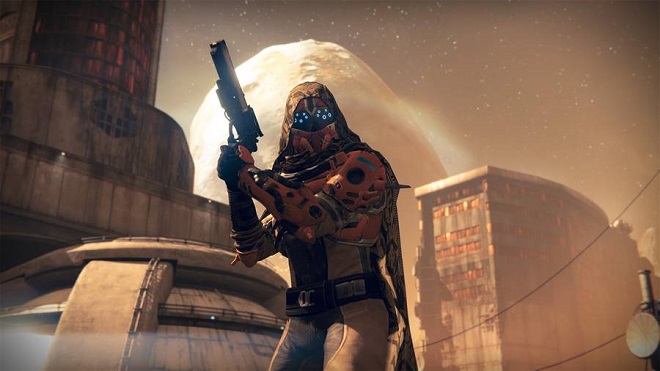
When a game is story-driven, you could find yourself watching a lot of cutscenes. While that’s all well and good, sometimes you want to get the show on the road, or maybe there’s a lengthy cutscene before a difficult boss that you keep having to repeat.
Not being able to skip cutscenes is torture, especially for games with overly long cutscenes.
Quick Time Events, or QTEs
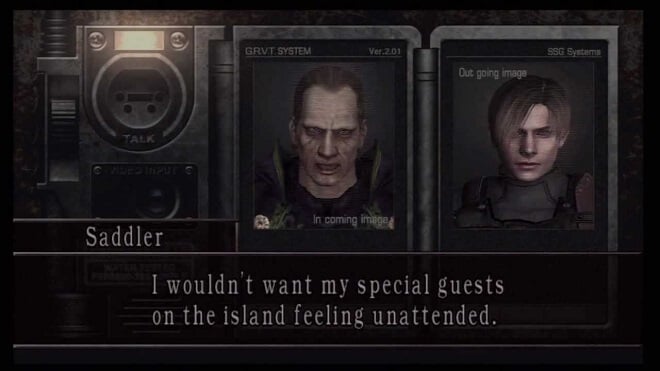
These are when a button prompt appears on the screen and has the player react quickly or else they face a penalty, whether that be damage or death. Games like Resident Evil 4 completely flooded the player with QTEs.
Another game, Heavy Rain was entirely made up of QTEs. While somewhat impressive for their times, they are often seen as tacky and unimaginative by today’s standards.
Escorts
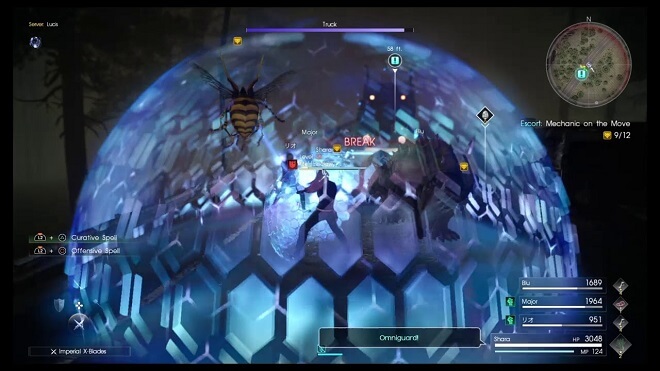
These missions in games usually have the player escort a much weaker character through hostile territory. This can be infuriating if the escorted character is slower than the main character, or is open to damage from enemies. It creates an awkward juggling act of protecting an AI character, defeating enemies, and balancing your own health that often leaves us frustrated and exhausted.
Stealth (when it’s not a choice)
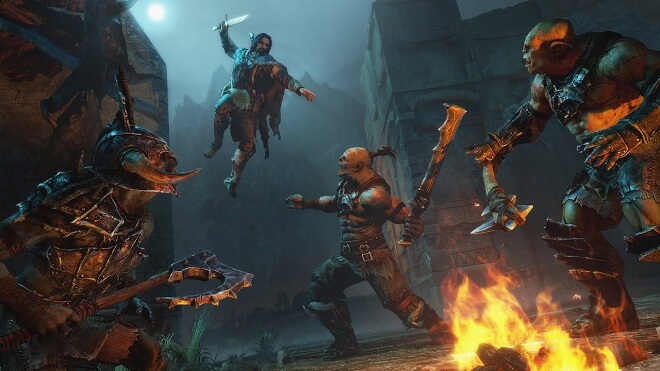
If you’re playing a stealth game in which you can essentially choose to go in quiet or loud, depending on your preference, that’s fine. But when a player is forced to be stealthy or lose the mission, that’s when you run into trouble. Especially if the game isn’t normally a stealth title and lacks good stealth mechanics.
This is extremely frustrating and can get even worse if you’re not allowed to harm enemies to make sneaking around a little easier.
Morality Choices
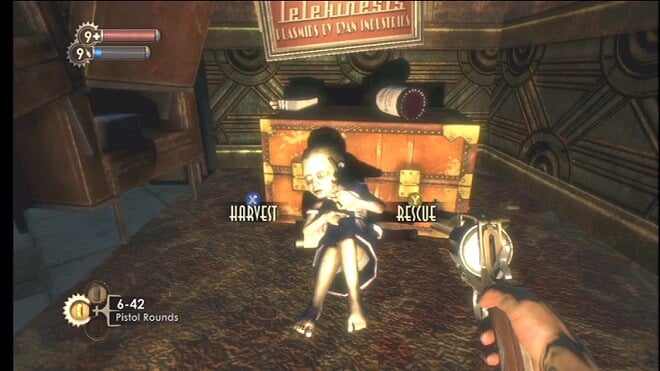
Are you good or bad?
Evil or righteous?
These morality systems that became especially popular in the early 2000s were revolutionary for their time.
However, like QTEs, they have worn out their welcome. While they seemed revolutionary and immersive, they quickly were exposed as little more than window dressing that at best could net you a different game ending.
Sometimes, they didn’t even do that.
Mass Effect was built around a seemingly fantastic morality system that spanned three games. It all boiled down to nothing at the end of the third title as the player simply chooses from three different endings, proving that nearly all of the choices you made in previous games really didn’t amount to anything.
Game Mechanics And Game Design
We’ve already mentioned a few of the ways game mechanics are important to a game designer, including their role in coming up with interesting mechanics and making sure they work together to deliver an enjoyable experience.
The one thing every game designer wants to avoid is having a list of great ideas on paper that don’t transition well in their video game.
When an experienced designer receives overwhelming feedback about their game being too repetitive, they’ll often look back and see what other game mechanics they can add to make the game more interesting.
If players say your game is boring or gets old quickly, it might be time to spice up existing game mechanics with better rewards and effects, or by giving them more depth.
If you’re an aspiring game designer, one of the best exercises you can do is take any game and try to break it down into main game mechanics. It might be better to start with simple classic or mobile games and then work your way up to something more complex.
The better you get at analyzing and understanding game mechanics, the better you’ll become at coming up with your awesome ideas.
